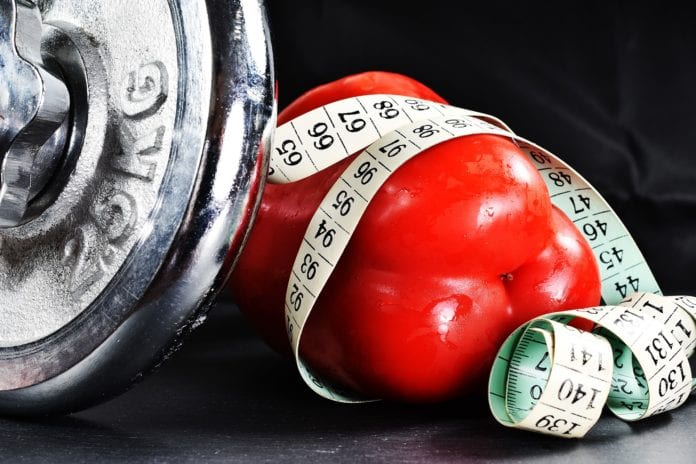As we undergo the process of aging, our muscle mass is more difficult to be developed and sustained. As a matter of fact, at about our 30th the majority of us begin shedding muscle mass by having a 3-8 percent of decline in lean muscle tissue volume every single decade of our lives and afterwards.
The reduction of testosterone quantities in men and reduction of estrogen quantities in women is the main cause, and accompanied with adjustments within nerves as well as blood cells and the body system are not transforming amino acids to muscle tissue effectively, and many more factors. However, muscle mass reduction isn’t necessary unavoidable, which is why frequent workout routines are very essential to building and maintaining muscle mass for us.
Exercise for Building Strength and Health
Strength exercise is really an essential part of the physical fitness formula. People should take part in muscle strengthening tasks which operate the primary muscle tissue groups (legs, waist, back, chest, abdominal area, shoulders and arms) for a couple of times every week.
Good examples for strength exercise involve weight lifting, applying resistance strap and performing push-ups, pull-ups and sit-ups. Indeed daily activities like carrying foodstuffs from grocery, having fun with your children and working your garden are able to build up muscle mass.
In addition to that, one the most effective methods to assist strength building is by simply consuming beneficial nutrients. Necessary protein, carbs as well as fat serve a significant part, similar to acquiring sufficient calories for a whole day. Keep reading to discover how each of them supports your muscle development along with the proper serving for daily basis.
How Protein Works in Building Muscle
On the effort of building muscle mass, consuming more protein is better, right?
Not necessarily true.
When you’re attempting to develop muscle mass with physical exercises, protein will compose 10 to 35 percent of overall calories required for adults. Studies present there is no advantage consuming extra protein over this specific quantity.
Maintaining muscle mass , however, demands a lot less protein in comparison to building fresh muscle mass. For instance, the suggested nutritional allowance intended for a normal person is 0.37 grams of protein for each pound of body weight, which is approximately 56 grams of overall protein for a 150-pound person.
A regular day which consists of 3 portions of low-fat or fat-free dairy products and 3 portions of protein meals (like low fat meat, poultry, seafood or beans) will supply excellent resources for protein to assist achieve that target. Grains, specifically whole grains, give some additional protein yet may not suffice to fulfill nutritional requirements.
Below is a list of some high-quality protein sources:
- Eggs: yolks and whites
- Poultry: Chicken and turkey breast (without skin)
- Beef: sirloin, tenderloin, filet, flank
- Ground meats (90/10 or leaner): chicken, beef, turkey
- Pork: tenderloin, deli ham, Canadian bacon
- Lean deli meat: chicken and turkey breast, ham, roast beef
- Low-fat dairy: milk, Greek yogurt, cheese, whey, casein
- Fish: tilapia, tuna, salmon, cod
- Seafood: shrimp, scallops, crab, oysters, mussels, lobster
- Soy: tofu, edamame, soy protein powder
How Carbohydrates Work in Building Muscle
Carbs are an essential category of meals for nourishing your muscle tissues. That’s due to the fact that carbohydrates are partly transformed to glycogen, which in turn is kept in muscle tissue to run your exercises. People who do workout for strength for two times a week would require about fifty percent calories out of their daily consumed carbs.
However, you don’t need to be craving up on chicken wings and burgers. Consider to take high quality carbs that are minimal in fat, including whole-grain pastries and oats for the very best strength-training improvement. Low-fat dairy and yogurt and fruits and veggies are also great alternatives and suppliers of carbs in our menu. When you arrange your foods and treats, it is suggested to keep abstinence from high-fiber food items instantly before or throughout the workout.
How Fat Works in Building Muscle
As opposed to the fat-free fashion, you certainly require fat within your everyday menu. Your body depends on fat in order to provide energy to muscle tissues throughout activity, and the amount of fat varies among individuals. As a standard requirement, fat should comprise 20 to 35 percentage of your overall calories.
For entire health and muscle strength, prioritize resources of heart-healthy fats, involving extra-virgin olive oil, canola oil, walnuts, pistachios, almonds, avocados and high-fat fish like salmon, halibut, mackerel, sardines and trout.
Fat provides twice the amount of calories as carbs and protein, thus it is essential to check serving sizes. For instance, 1 tbsp of olive oil contains 120 calories and 1 ounce of walnuts (about 14 nuts) contains 185 calories. When possible, evaluate and calculate prior to consumption. In addition to that, is to consider to conduct meeting with trainers and nutrition experts for further guidance of muscle training and nutrition planning .
References:
How To Build Muscle: The Definitive Guide to Building Muscle
7 Muscle-Building Mistakes to Avoid: Overview – Men’s Health


